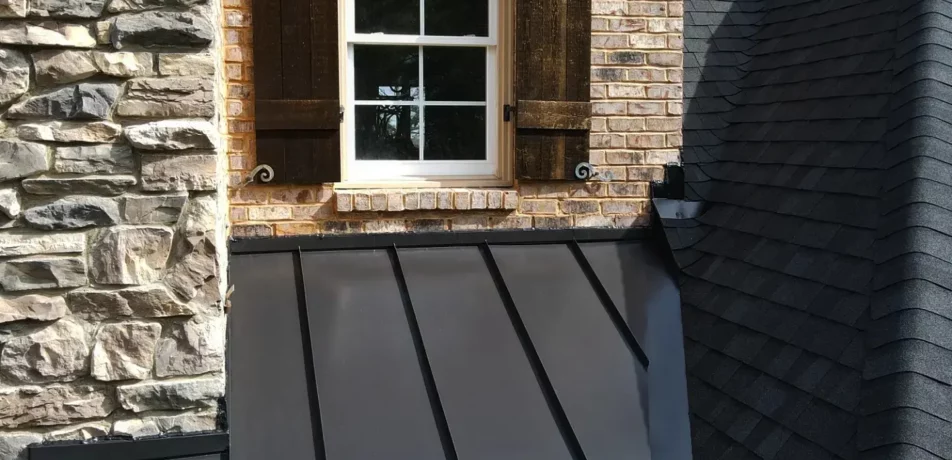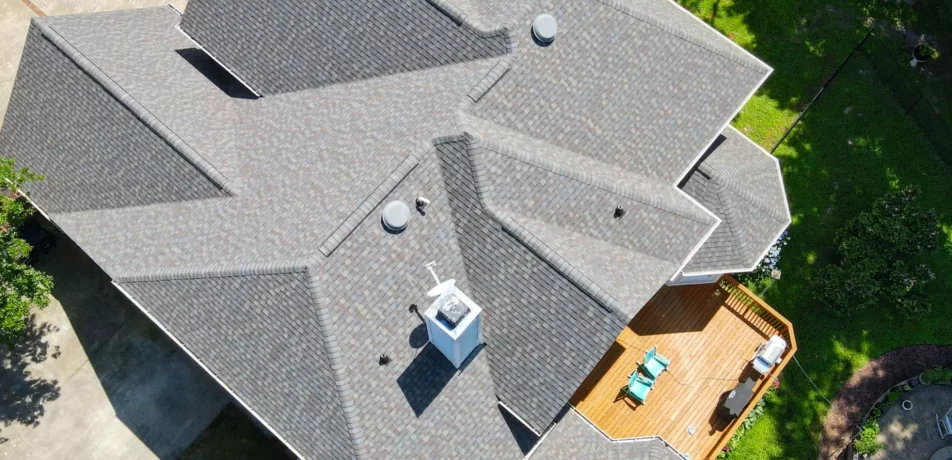Popular Roofing Materials & Types For North Carolina Roofs
Popular Roofing Materials & Styles For North Carolina Roofs
Choosing the correct roofing materials for North Carolina is crucial due to the state’s diverse climate, which includes hot summers, occasional severe weather, and varying humidity levels. The right material can provide better durability, energy efficiency, and protection against local weather conditions. Additionally, selecting a suitable roof material can enhance your home’s longevity, reduce maintenance costs, and improve overall comfort and energy savings.

Commonly Used Roofing Materials In North Carolina
Roof Shingles
Roof shingles offer several benefits, making them a popular choice for many homeowners. They are cost-effective, relatively easy to install, and available in a wide range of styles and colors to match various architectural designs. Asphalt shingles, the most common type, provide good protection against weather elements and are known for their durability and fire resistance. They are also relatively lightweight, which means they can be installed on most roof structures without requiring additional support. Shingles are particularly well-suited for sloped roofs, as their layered installation allows for efficient water runoff, reducing the risk of leaks. Additionally, newer types of shingles, such as architectural or laminated shingles, offer enhanced aesthetic appeal and improved longevity, making them suitable for both residential and commercial properties.
Metal Roofing
Metal roofs offer numerous benefits, making them an excellent choice for various types of buildings. They are incredibly durable, often lasting 40 to 70 years, and can withstand extreme weather conditions, including high winds, heavy snow, and hail. Metal roofs are also fire-resistant, providing an extra layer of safety for your home. Their reflective properties help reduce energy costs by keeping homes cooler in the summer, making them an energy-efficient option. Additionally, metal roofs are environmentally friendly, as they are often made from recycled materials and can be recycled again at the end of their lifespan. They require minimal maintenance compared to other roofing materials. Metal roofs are best suited for both residential and commercial properties, particularly those with steep or low-sloped roofs, and are ideal for modern architectural designs due to their sleek and contemporary appearance.
Tile Roofing
Tile roofing offers several benefits, making it a popular choice for various types of buildings. Tile roofs are highly durable, often lasting 50 to 100 years or more, and are resistant to fire, rot, and insect damage. They provide excellent thermal insulation, helping to keep homes cooler in the summer and warmer in the winter, which can reduce energy costs. Tile roofs are also environmentally friendly, as they are made from natural materials and can be recycled. Additionally, they come in a variety of styles, colors, and textures, allowing for versatile design options that can enhance the aesthetic appeal of any home. Tile roofing is particularly well-suited for Mediterranean, Spanish, or Southwestern-style homes, but can also be adapted to other architectural styles. They are best installed on roofs with a steep slope to facilitate proper water runoff and to support the weight of the tiles.

Roofing Styles In North Carolina
Hip Roof
A hip roof offers several benefits, making it a desirable choice for many homeowners. One of its main advantages is its stability and durability, as the inward slope on all four sides provides excellent resistance to high winds and heavy snowfall, making it ideal for regions with extreme weather conditions. The design of a hip roof also allows for better water and snow runoff, reducing the risk of leaks and water damage. Additionally, the sloped sides provide extra living or storage space under the roof, which can be utilized for attic space or vaulted ceilings. The aesthetic appeal of a hip roof, with its symmetrical and balanced appearance, enhances the curb appeal of a home. Furthermore, the consistent eaves around the roof provide additional shade, which can contribute to better energy efficiency by reducing heat gain during the summer months.
Gable Roof
A gable roof offers several benefits, making it a popular choice for residential homes. One of the main advantages is its simple design, which makes it easier and more cost-effective to build compared to more complex roof structures. The steep pitch of a gable roof allows for efficient water and snow runoff, reducing the risk of leaks and water damage. This design also provides ample space for an attic or vaulted ceilings, enhancing the home’s storage and aesthetic options. The gable roof’s triangular shape promotes good ventilation, helping to maintain a comfortable indoor climate and prevent moisture buildup. Additionally, its classic and versatile appearance complements various architectural styles, enhancing the overall curb appeal of a home. The straightforward construction and functional design of a gable roof make it a practical and attractive roofing option.
Flat Roof
A flat roof offers several benefits, making it an attractive option for both residential and commercial buildings. One of the primary advantages is the additional usable space it provides, which can be utilized for rooftop gardens, terraces, or HVAC systems. The straightforward design of a flat roof makes it easier and more cost-effective to construct and maintain compared to pitched roofs. Flat roofs are also ideal for installing solar panels due to their ample, unobstructed surface area. Additionally, the modern, sleek appearance of a flat roof can enhance the architectural appeal of contemporary and minimalist designs. Despite its name, a flat roof is built with a slight pitch to ensure proper water drainage, reducing the risk of leaks and water damage. Overall, the practicality, cost efficiency, and aesthetic versatility of flat roofs make them a popular choice for many property owners.
Request a Free Estimate
We would be happy to connect with you and provide an estimate for all your roofing needs.
"*" indicates required fields
or Call (919)-671-4418
We're standing by to discuss your roofing project.

